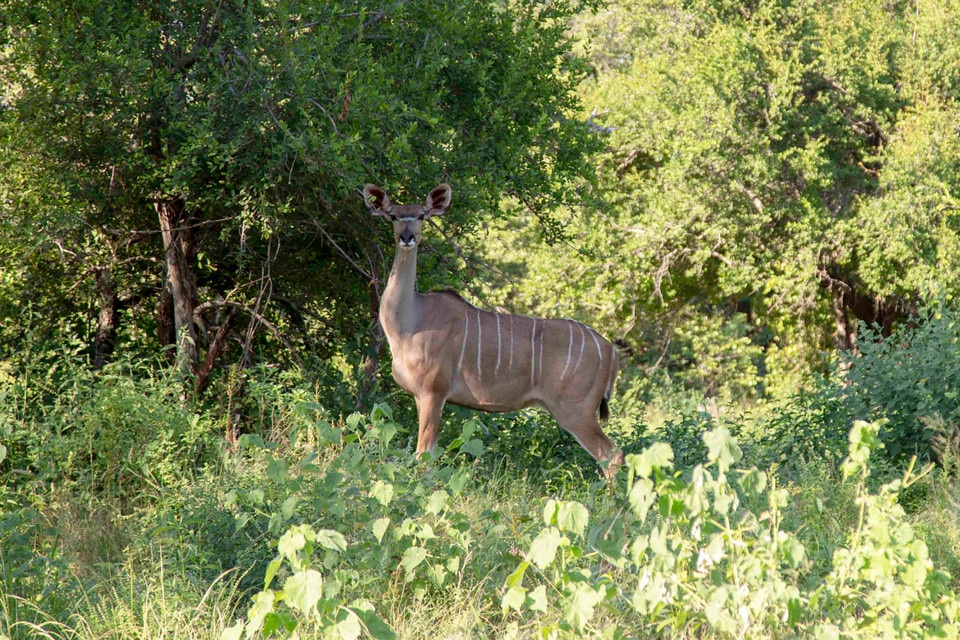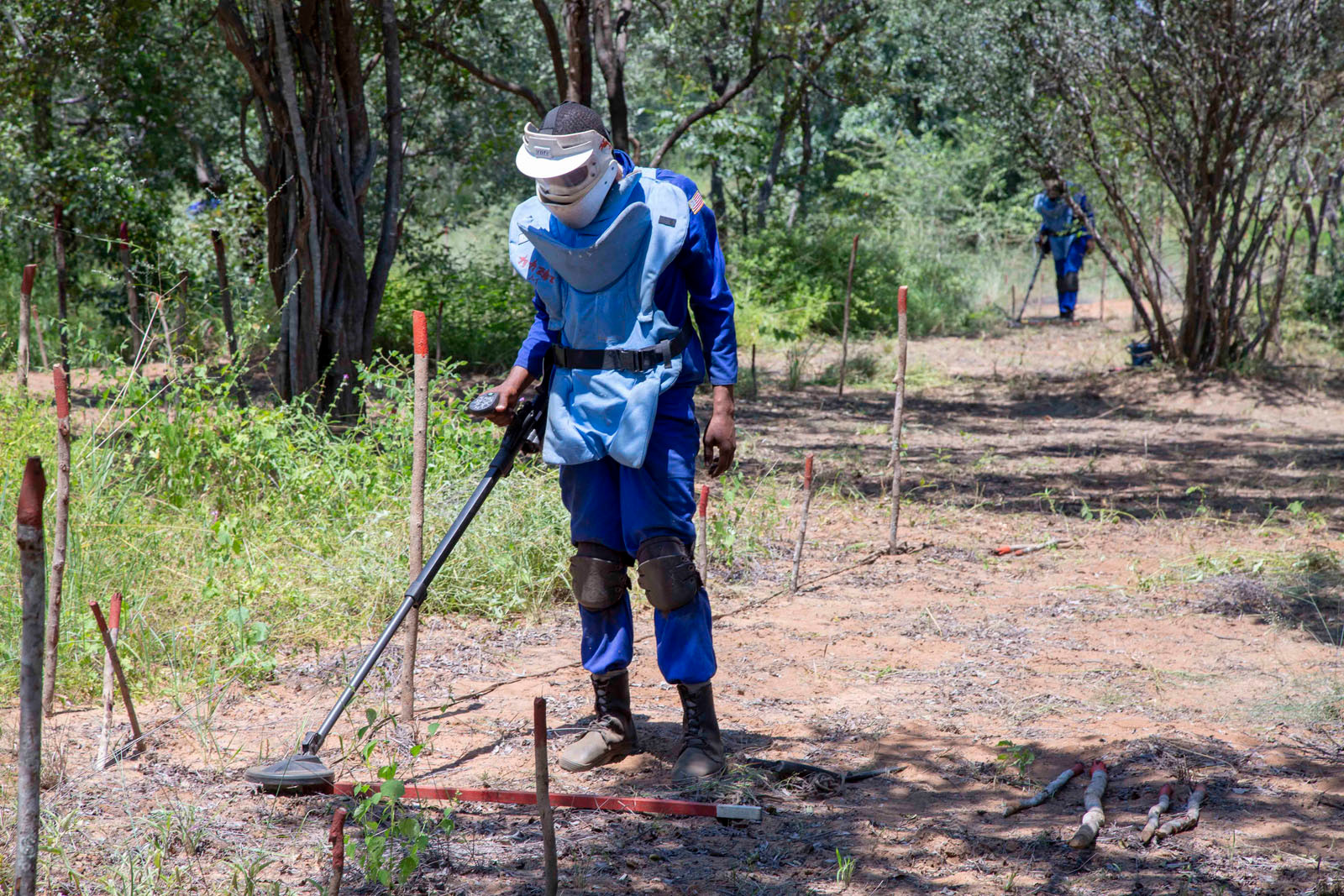Project will help protect local communities and threatened elephants, pangolins, and other wildlife.
Washington D.C. – Thanks to a grant from the U.S. Government, APOPO has kicked off a new project to clear a dense minefield laid four decades ago in one of the largest conservation areas in the world.
APOPO has been tasked by the Zimbabwean Government with clearing more than seven million square meters of land, including a critical area inside what is now the Great Limpopo Transfrontier Park (GLTP), the largest contiguous wildlife area in the world, which spans South Africa, Mozambique and Zimbabwe.

Hidden landmines also kill and injure wildlife, putting animals like this female Greater Kudu at risk.
The grant from the U.S. Government has allowed APOPO to begin its work clearing landmines along the Cordon Sanitaire minefield that affects the Sengwe Wildlife Corridor, helping to protect not only the animals that rely on this critical land, but also the local populations and their livestock. With additional funding, APOPO aims to finish clearing the minefield by Zimbabwe’s 2025 landmine-free deadline, which will also support opening up eco-tourism opportunities.
“We are very enthusiastic and honored to take part in clearing the heavily mined areas along the Zimbabwe, Mozambique border to allow not only local communities use their land freely and without fear, but to allow safe movement for endangered wildlife and support overall conservation efforts,” APOPO Zimbabwe Program Manager Tess Tewelde said.
APOPO estimates it will find and destroy about 15,300 anti-personnel landmines over the performance period. To date, APOPO has cleared over 45,000 square meters.
During Zimbabwe’s Liberation War of the 1970s, the Rhodesian Army laid massive minefields to prevent guerrilla fighters from entering the country, including a 37 kilometre-long minefield in the Sengwe Wildlife Corridor. The mine belts are extremely dense, 2,500 mines per linear kilometer.
Tens of thousands of people live in close proximity to these landmines which are a threat to their security and that of their precious livestock, and limits access to resources such as water, grazing areas, and roads. This is one of the poorest, driest areas in Zimbabwe, and livestock rearing is the main source of livelihood. Up to 100 cattle are lost on this minefield each year, pushing whole households into poverty.
In addition to posing a threat to people and impeding free movement, the landmines prevent the safe migration of the large elephant herds between Gonarezhou and Kruger National Parks, which threatens the viability of the elephant population and can lead to conflict with people when the elephants damage their crops or otherwise interfere with their daily activities.
The Sengwe Wildlife Corridor is a specifically designated area aimed at allowing free movement of wildlife between South Africa’s Kruger National Park and Zimbabwe’s Gonarezhou National Park. The deadly landmines affect the wildlife who call GLTP home. The landmines cause a serious threat to threatened wildlife such as elephants, pangolins, lions, and endangered wild dogs.
As a structural barrier, the landmines scare away safari and conservation-focused eco-tourism operators. Kruger National Park receives a massive influx of tourists (over 1.8 million visitors each year), which could potentially travel up the Sengwe Corridor and into Gonarezhou National Park without requiring a visa or leaving the conservation area. Currently Gonarezhou National Park receives virtually no international tourists. If even a small fraction of the Kruger National Park tourists made it to Gonarezhou National Park, the positive economic implications for Zimbabwe would be significant.

APOPO Deminer points to possible Zebra remains on the minefield.
During the first year of operations, APOPO will demine both priority areas of the Cordon Sanitaire minefield as well as an adjacent road, which will be key to operational logistics moving forward.
Throughout the project period, APOPO will liaise closely with local village and government leaderships, as well as the Gonarezhou Conservation Trust (GCT), who are responsible for development of conservation efforts and eco-tourism in the park. The coordination will ensure APOPO’s demining efforts are aligned with both conservation and development priorities of the region.
APOPO also hopes to tie its work closely with the United States Agency for International Development (USAID) effort to develop a Cross Border Security Plan around Gonarezhou National Park and the Sengwe Wildlife Corridor. Zimbabwe is a USAID Resilience Focus country and the USAID program provides economic opportunities for communities that are susceptible to climate change and significant economic stresses. The goal is to support countries in their ability to cope with and recover from these shocks while conserving natural resources for sustainable livelihoods.
APOPO is a global non-profit organization with Belgian roots, best known for having trained African giant pouched rats to detect landmines for over 20 years. APOPO is also a full service demining organization, and in Zimbabwe is not using rats, but rather manual deminers as they are a more appropriate tool for the dense minefields affecting the Sengwe Corridor.


